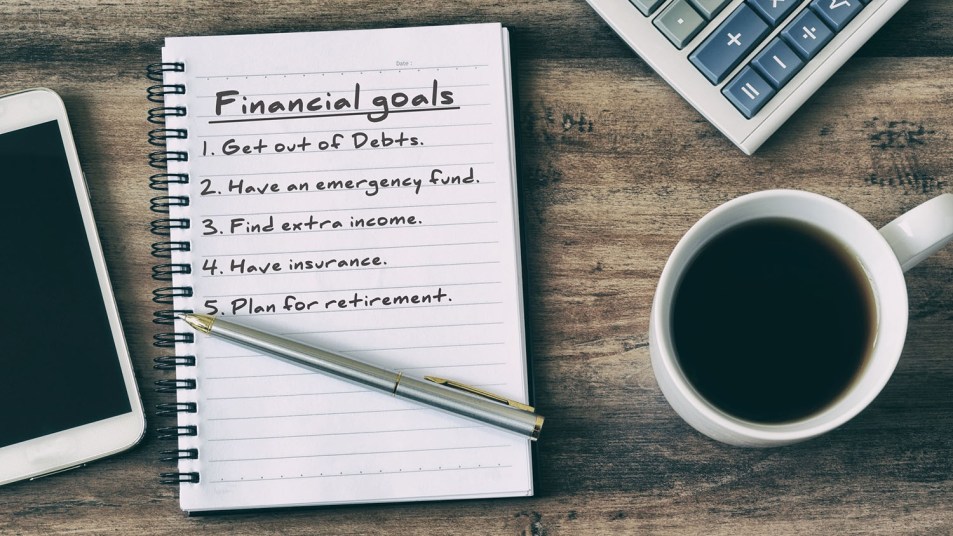5 Smart Things to Do With Your Stimulus Check

Any day now, many of us should be getting a $1,200 federal stimulus check to help us deal with the fallout of COVID-19.
Maybe you’ve already received it, or maybe you’ll have to wait a little longer. The first payments are being sent digitally to people who filed either a 2018 or 2019 tax return and received a refund via direct deposit. By the end of April, mailed checks should start going out to tax filers who gave no bank information to the IRS.
Now, maybe you lost your job because of the coronavirus, and you need every penny of that $1,200 to pay for food and shelter. (You also get $500 per child.)
But maybe you’re still working and earning an income, in which case that money is simply a welcome bonus in this time of uncertainty. If so, here are five financially responsible suggestions for what to do with it:
1. Start an Emergency Fund — and Grow It 20x Faster
If you’re one of the millions of Americans who don’t have an emergency fund, now’s a good time to start one.
That’s right — save your stimulus payment for a rainy day. If you have no savings, an unexpected expense like a car repair could force you to take out a loan or max out your high-interest credit cards.
One good way to avoid spending your emergency fund is to separate it from your everyday checking account. Try depositing your stimulus money into an online savings account that pays you better interest than a brick-and-mortar account.
A mobile banking app called Varo is one option. The average savings account pays a paltry .07% APY*, but Varo pays you more than 20 times that. Oh, and there are no monthly fees.
We know opening a new bank account isn’t exactly everyone’s idea of fun, but Varo makes it easy. You can open an account with just a penny, and more than 750,000 people have already signed up.
* https://www.fdic.gov/regulations/resources/rates/
2. Grow Your Money by Investing It
We know it’s tempting to spend your stimulus money on instant gratification — you know, order something on Amazon, then do a fist-pump of triumph when it appears on your doorstep.
Resist temptation and think of the future instead. Investing that money now could pay off big-time down the road. And while it’s true that the stock market can be volatile these days, you’ve got to take the long view when it comes to investing.
You can start small if you want. We like an app called Stash because you can get started with as little as $1, and it lets you choose from hundreds of stocks and funds to build your own investment portfolio.
Stash makes it simple by breaking investments down into categories based on your personal goals. Want to invest conservatively right now? Totally get it! Want to dip in with moderate or aggressive risk? You can do that too.
If you sign up now (it takes two minutes), Stash will give you $5 after you add $5 to your account.
3. Boost Your Retirement Savings
All too often, we don’t think about our retirement savings until we’re creeping closer to our 60s. But if you start building your retirement accounts earlier, you’ll benefit more from compound interest.
Funnel some stimulus money into your retirement fund now — before you buy up a bunch of material stuff that won’t mean anything a decade from now.
As of 2020, you can contribute up to $19,500 a year to your 401(k) or $25,500 if you’re 50 or older. Or you could open an IRA — a retirement account that’s not tied to an employer. You can contribute up to $6,000 to an IRA or $7,000 if you’re 50 or older. So your stimulus check will definitely fit.
4. Pay Your Bills and Save Nearly $900/Year
It’s crazy how paying off a large bill actually feels like a gift when you reach adulthood. Earmarking your stimulus money for your annual car insurance bill, your kid’s summer camp tuition or another big, once-a-year expense means you won’t have to scramble to get the money together when it’s due.
While you’re paying bills, it’s worth checking to see if you’re still getting the best deal on your unavoidable bills — like auto insurance. How would you feel if you found out you were wasting nearly $900 on this particular bill?
There’s an app called Jerry, and it can tell you if you’re paying too much on your car insurance. In fact, Jerry says it finds that people, on average, are overpaying by about $887 a year.
Once you’re with Jerry, you’ll never have to worry about shopping around for insurance again. From now on, Jerry will automatically do that for you. Also, it won’t cost you anything — it’s all free.
If you’re worried about ditching your current policy, know that you can back out at any time. By law, insurance companies have to give you a refund for the remaining unused days on your policy. To find out if you’re getting ripped off, fill out the online questionnaire.
This should take less than two minutes, then Jerry will take care of the rest.
5. Get Rid of Your Credit Card Debt
Fact: Credit card debt is the most expensive kind of debt you can have. You could use your stimulus money to get rid of a lot of it, saving yourself a lot of money in interest payments.
If you have any credit card debt left after that, we’ve got a suggestion. Your credit card company is probably getting rich off the insanely high interest rates that it’s charging you. But a website called Fiona could help you pay off that bill as soon as tomorrow.
Here’s how it works: Fiona can match you with a low-interest loan you can use to pay off every credit card balance you have. The benefit? You’re left with just one bill to pay every month, and because the interest rate is so much lower, you can get out of debt so much faster. Plus, no credit card payment this month.
If your credit score is at least 620, Fiona can help you borrow up to $100,000 (no collateral needed) with fixed rates starting at 3.84% and terms from 24 to 84 months.
Fiona won’t make you stand in line or call a bank. And if you’re worried you won’t qualify, it’s free to check online. It takes just two minutes, and it could save you thousands of dollars. Totally worth it.
Woman’s World has partnered with The Penny Hoarder to bring you expert money saving tips like these.













